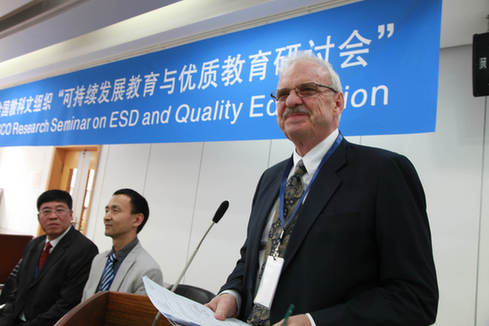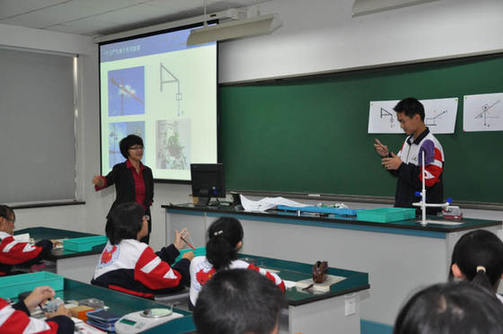Education for Sustainable Development: The Path of Future Learning
 |
|
Charles Hopkins, UNESCO Chair in Education for Sustainable Development, at the UNESCO Research Seminar on ESD and Quality Education. |
Over the last decade, ESD has gone beyond environmental education and evolved into a system focusing on the values and lifestyle of sustainable development. This education is centered on respect – respect for contemporaries and future generations, for differences and diversity, for the environment and for the Earth’s resources. Meanwhile, it also attaches great importance to learning capacity, like critical thinking, figuring out solutions and daring to innovate based on tradition. These capabilities are required to realize sustainable development.
ESD can be summarized as: to meet the demands of sustainable development, we should help students to master related knowledge and learning capacity, so that they will embrace and practice the values of sustainable development. Students are expected to participate in solving existing problems, and facilitate the sustainable development of society, the economy, the environment, and culture.
ESD in China
Along with acceptance of the notion of sustainable development, ESD is becoming more familiar to schools, parents and Chinese society as a whole. After 15 years, the progress in China’s primary and middle schools is remarkable. One of the achievements is cultivating students’ sustainable learning ability and values, in contrast with the traditional practice of focusing on academic performance. Students are encouraged to develop their abilities for life-long study and promote the quality of learning and lifestyle for better adaptation to the future.
Putuo District in Shanghai is one of the first national ESD experimental districts. All schools, from primary to senior high, have introduced the new concept to their curricula, and established 36 experimental facilities including museums, farms, laboratories and innovative workshops. Every school determines their research priorities according to their own strengths. They design new models of learning, train students to do research independently as well as collectively. For example, Caoyang Primary School carried out a series of activities on promoting wildlife protection. In addition to classroom teaching, students also visited communities and families to investigate invasive species. The school has signed agreements with Shanghai Zoo and Wild Animals Park whereby students raise and take care of animals themselves. Third grade students, guided by experts and volunteers, conducted independent studies like “the survival environment of giant salamanders,” “how chimpanzees raise their young,” “invasion of the Chamisa,” and “the ABC of swine flu.” These activities broadened students’ knowledge, and honed their learning ability and sense of creativity.
|
 |
|
A demonstration class for the UNESCO Research Seminar on ESD and Quality Education. |
